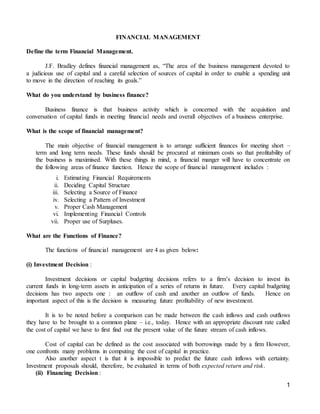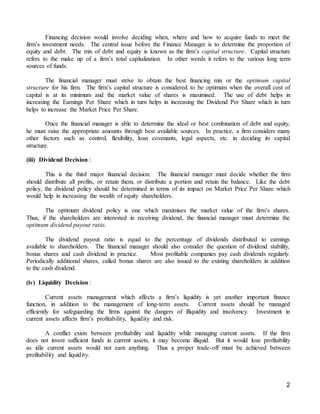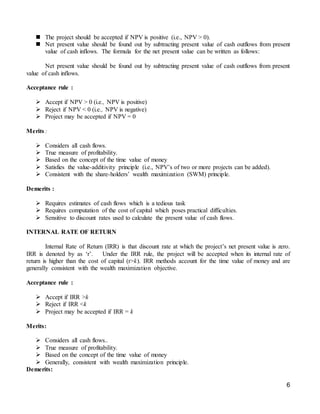The document discusses various topics related to financial management including:
1. Financial management involves judicious use of capital and careful selection of funding sources to help a business reach its goals.
2. The scope of financial management includes estimating funding needs, capital structure, funding sources, investment patterns, cash management, and controls.
3. Key financial decisions include investments, financing, dividends, and liquidity. The optimal decisions maximize shareholder wealth.
4. Capital budgeting evaluates long-term investments using techniques like net present value, internal rate of return, and profitability index.






